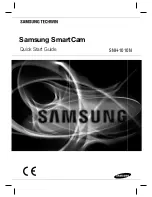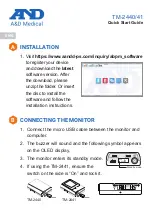
LED risk indicator
The World Health Organization (WHO) has defined the internationally recognised classification for the evalua-
tion of measured blood pressure values listed in the table below:
Measured blood pressure value range
Classification
Colour of the risk
indicator
Systole
(in mmHg)
Diastole
(in mmHg)
≥ 180
≥
110
High blood pressure stage 3 (severe)
Red
160 – 179
100
–
109
High blood pressure stage 2 (moderate)
Orange
140 – 159
90 – 99
High blood pressure stage 1 (mild)
Yellow
130 – 139
85 – 89
High normal
Green
120 – 129
80 – 84
Normal
Green
< 120
< 80
Optimal
Green
Source: WHO, 1999 (World Health Organization)
The LED risk indicator (coloured LED on the device to the left of the display) shows which category the re
-
high normal category and diastole in the normal category), the risk indicator then always shows you the higher
category – “high normal” in the example described.
Please be aware that these standard values can only serve as a general guideline, as the individual blood
Furthermore, it must be noted that measurements taken yourself while at home are generally lower than those
that are taken by the doctor. For this reason, it is important that you regularly consult your doctor for advice.
Only they are able to give you your personal target values for controlled blood pressure – in particular if you
receive medicinal therapy.
Displaying and deleting measurements
User
memor
y
The results of every successful measurement are stored together with the date and time. If there are
more than 120 measurements, the oldest measurements are lost.
• First select the desired user memory that you want to view the data for as described in the chapter on
selecting a user.
• Then press the memory button
M
on the switched-off device.
Aver
age
values
A
flashes on the display.
The average value of all saved measured values in this user memory is displayed.
• Press the memory button
M
.
AM
flashes on the display.
The average value of the morning measurements for the last 7 days is displayed
(morning: 5.00 a.m. – 9.00 a.m.).
• Press the memory button
M
.
30











































